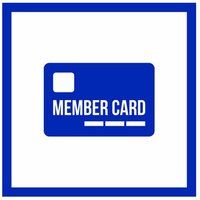In-House Membership Programs Generate Revenue, Reach Untapped Markets
In-house membership programs can make a practice's revenue more predictable, and improve patient health, too.

If you’re looking to attract new patients, retain current patients, and encourage those who may not have dental insurance to move forward with needed treatment plans, you might want to consider developing an in-house membership program.
The combination of dentists not wanting to deal with the hassles of third-party payers, and many patients or potential patients not having dental insurance, has resulted in significant growth of this type of program.
“I started as a lab technician,” explains Jordon Comstock, founder of
, a software company that allows dental practices to accept payments through their website. “And as a lab technician, the number one complaint I heard from dental practices was, ‘Insurance companies are a pain to work with. They’re not paying out claims, and the patient needs it.’”
The US Department of Health and Human Services states that approximately 108 million people in the US
. And even those who do have insurance have trouble getting service.
“The only way an insurance company can make money is by rejecting claims, or hoping their subscribers don’t use their insurance benefits,” Comstock says. “That’s a business model right there. I just think it provides a bad patient experience.”
But in-house membership programs are starting to change that.
Financial Benefits
Comstock likens an in-house membership program to an Amazon Prime or Costco membership. Individuals pay a subscription, whether it’s monthly or annually, and they receive benefits.
And the dental practice receives predictable revenue.
“Whether the dentist is working in dentistry or not, he gets that revenue each month,” Comstock says. “I spoke with a dentist last week and he’s generating $100,000 a month with his dental membership program. That’s going to increase the value of your practice tremendously.”
Patients are also more likely to have work done if they’re paying into the plan, because they know exactly what they’re covered for—how many exams, cleanings, and what different preventive measures may cost. That not only generates income for the practice, it benefits patients because they’re getting the oral health care they need.
“Patients become more loyal to the practice that way,” Comstock says.
Untapped Market
Ben Tuinei is the president and founder of
, which focuses primarily on negotiating fair and sustainable reimbursement rates from insurance carriers and employing proper billing and coding practices in an effort to fully maximize practice revenue.
Tuinei worked with an Arizona-based practice to develop an in-house membership program. The result was of the $300,000 the practice collected per month, $75,000 came from the dental benefit program.
“That’s 25% of the total monthly revenue that was coming in,” Tuinei says. “That $75,000 was coming from a combination of the monthly or annual fee from patients, as well as treatments that we were able to capture as a result of making dentistry more affordable.”
Tuinei says that as the program started to grow, they realized they were tapping into an area of dentistry that was underserved. And when crunching the numbers, they found that if they were able to active another 10% of the underserved patients in the community, they would have to build another dental center.
“That’s why [in-house membership plans] are becoming more popular,” he says. “Having your own in-house dental benefit program is a great way to create not necessarily an insurance product, but a product that is designed to be like insurance in terms of increasing utilization, and increasing frequencies of patients coming in for routine dental care.”
Focus on Marketing
Tuinei acknowledges that some staff training is involved when starting an in-house membership program. But if the dental practice is already dealing with third-party payers, training is minimal.
“Most practices it’s a two-hour, 30-minute phone call session with me, and they get a pretty good understanding of how similar this is to any other type of dental insurance product from a management perspective,” he says.
The key is having staff that is committed to the program, and someone with very effective sales techniques. In Arizona, for example, the group practice hired a personal banker who also served as a business banker for a local bank. He was very effective with soft closes.
“You can’t have a high pressure sales person at the treatment planning position in a dental practice,” Tuinei says. “You have to have somebody who has a strong understanding of influencing patients to move forward with treatment.”
Tuinei says that with a dental benefits program, when you take time to create one and present it to your uninsured patients, and market it to the community, it works no differently than a PPO plan in terms of the number of new patients growing over a period of time.
“I believe everybody is capable of seeing results within the first six months of launching their own in-house dental benefits plan.”
ACTIVA BioACTIVE Bulk Flow Marks Pulpdent’s First Major Product Release in 4 Years
December 12th 2024Next-generation bulk-fill dental restorative raises the standard of care for bulk-fill procedures by providing natural remineralization support, while also overcoming current bulk-fill limitations.